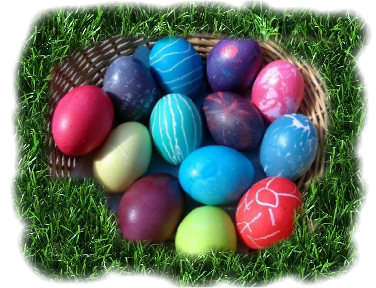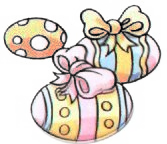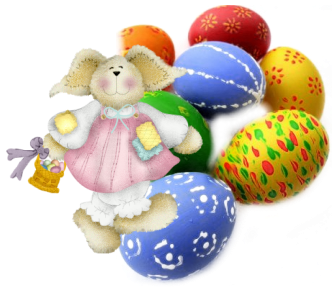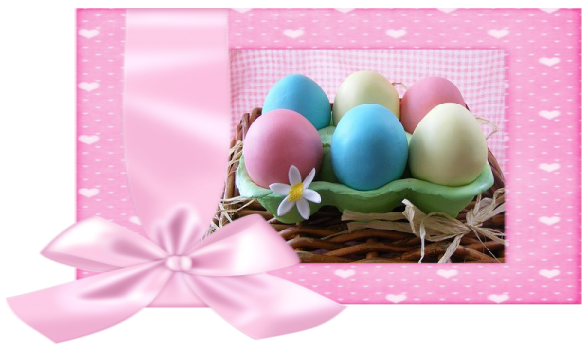
This has been a long time tradition in my family, dyeing and hiding eggs. My Mother used to complain about the mess we made with all the cups and dyes and how our hands would be all stained the next morning for church...but I secretly think she like the fact that we came home every year to continue the tradition and the mess. Up until she passed away I went down to Florida every year for Easter so my son could have Easter with his Nana...so this one's for her.

Now just how did all this egg dyeing get started?
But how did eggs come to be associated with Easter?
At the Passover Seder, a hard-boiled egg dipped in salt water symbolizes both new life and the Passover sacrifice offered at the Temple in Jerusalem.
In Christian times, the egg was a symbol of new life just as a chick might hatch from the egg. The Easter egg tradition may have celebrated the end of the privations of Lent. In the Medieval Europe, eggs were forbidden during Lent as well as other traditional fast days. During the strict Lenten fast of forty days no eggs were eaten. In Eastern Christianity, both meat and dairy are still prohibited during the fast, and eggs are seen as "dairy" (a foodstuff that could be taken from an animal without shedding its blood). That is the reason why eggs laid during that time were often boiled or otherwise preserved.

It was during Easter that the consumption of eggs resumed after the strict Lenten fast. Eggs were thus a mainstay of Easter meals, and a prized Easter gift for children and servants. Most likely
the eggs were dyed to make them more attractive and exciting.
An Orthodox tradition related with Easter celebrations is the presenting of red colored eggs to friends while giving Easter greetings. In Greek homes, you will find a special Easter Bread with a red dyed egg in it's center. My husband is Greek and his family gives him this bread every Easter. Of course his Easter and my Easter rarely fall on the same day...but that's a whole other story.

According to a History channel documentary about Mary Magdalene and her role in Christianity, the custom derives from a biblical event. After the Ascension of Christ, Mary supposedly went to the Emperor of Rome and greeted him with "Christ is risen", whereupon he stated, "Christ has not risen no more than that egg is red" (pointing to an egg on his table). After making this statement it is said the egg immediately turned blood red.
The coloring of eggs is an established art, and eggs are often dyed, painted, and otherwise decorated. Eggs were also used in various holiday games: parents would hide eggs for children to find, and children would roll eggs down hills. These practices live on in Easter egg hunts and egg rolls. The most famous egg roll takes place on the White House lawn every year.The oldest tradition is to use dyed and painted chicken eggs, but a modern custom is to substitute chocolate eggs, or plastic eggs filled with confectionery such as jellybeans. Candy Easter eggs can be any form of confectionery such as hollow chocolate eggs wrapped in brightly-colored foil. Some are delicately constructed of spun sugar and pastry decoration techniques. The jelly egg or jellybean is made from sugar-coated pectin candy. These are often hidden, supposedly by the Easter Bunny, for children to find on Easter morning.

Recently Easter eggs have been specially prepared keeping in mind those who are visually-impaired. These are called "Beeping Easter eggs" - Easter eggs that emit various clicks and noises so that the visually-impaired children can hunt for them. Some make a single, high-pitched sound and others play a melody. The purpose of this is to include one and all in the joyous Easter celebrations and to spread happiness and goodwill among everyone. After all, that is what Easter is all about.
Does anyone remember the scene in "Steel Magnolias" when all those Easter eggs got smashed?

Let your children and grandchildren help you to dye the eggs this year...there are no ugly colors, just let them mix and dip and have a ball. Life's too short not to get your hands dirty once in a while. And even though I now know that rubbing some Clorox bleach on my hands will get the dye off...I don't do it till after church, Mama knows that stained fingers can fold in prayer just as good as clean ones.
Until we meet again,
